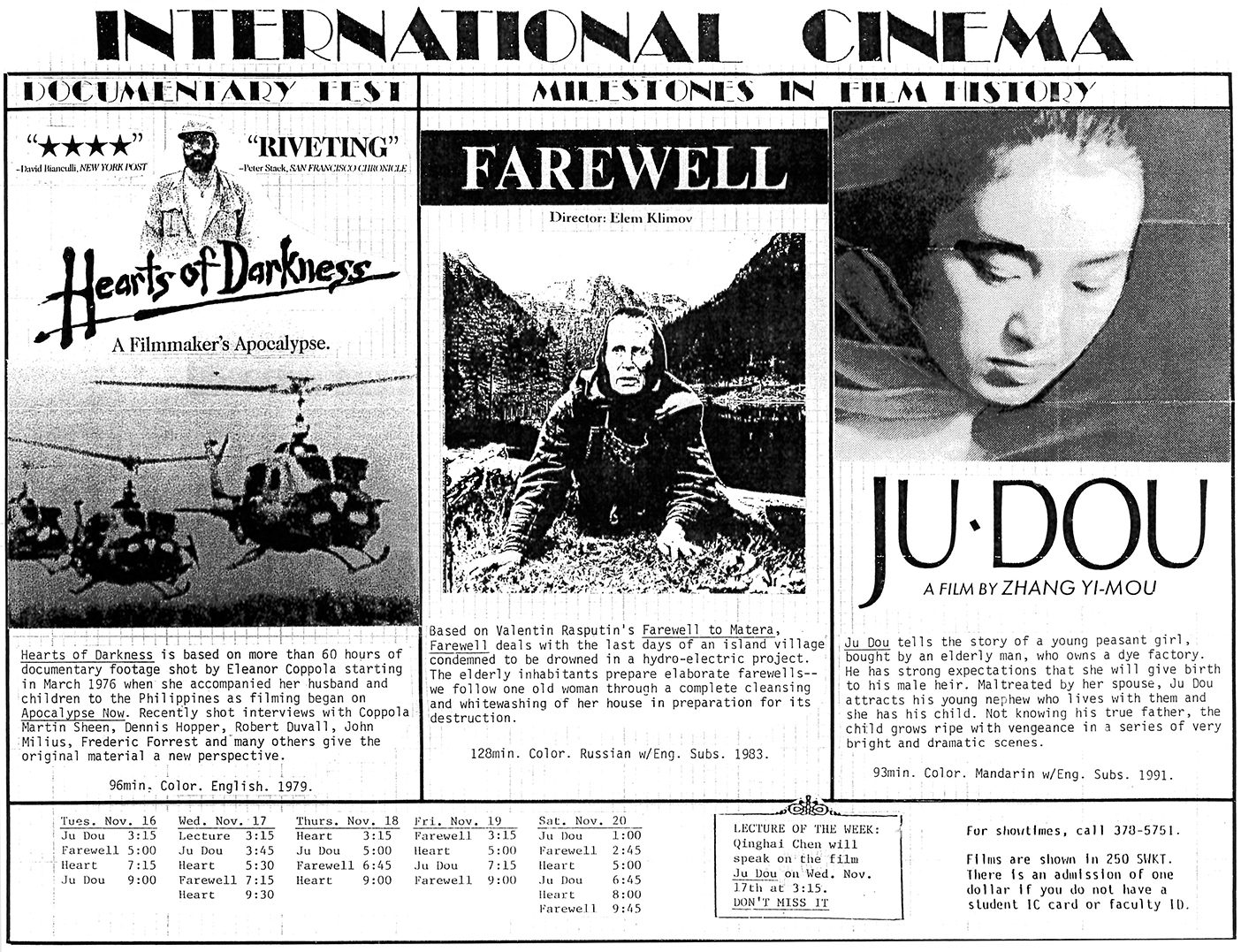BYU alumni reflect on the role International Cinema played in their BYU education.
“I’m sort of amazed that International Cinema isn’t a thing at every university,” wrote one BYU alum. And what a thing this foreign-film feast is. Inaugurated in 1968 by BYU German professor Joseph O. Baker, International Cinema has challenged and delighted students and faculty for half a century now with nearly 1,000 films in 133 languages. For many alumni, seeing artistic renderings of a broad swath of human experience and imagination proved transcendent and transformational. Here are some of their memories.
The World Was Our Campus
Heather Bickmore Sundahl (BA ’91, MA ’94)
No matter what else was going on in my life at BYU—good roommates, bad roommates; good hair, bad hair (it was the ’80s); good grades, bad grades—there was always International Cinema. Rarely did a week go by that I didn’t head to the SWKT to catch a film or two. It was almost a litmus test when meeting someone new: if they also loved International Cinema, then chances were we’d be friends. One potential roommate came with me to see Das Boot only to be disappointed it wasn’t about German footwear. We did not end up living together. Not that I loved every movie I saw: Battleship Potemkin? Nyet! But even movies that mystified me (Black Orpheus, what the heck?) or depressed me (Pelle the Conqueror, you heartbreaker) or shocked me (Adèle H, you poor thing!) kept me glued to my seat and hungry to get back in line at this all-you-can-eat international buffet. Dearest to my heart are the movies I saw while falling in love: My Mother’s Castle, Manon of the Spring, Cyrano, and Cinema Paradiso. Something magical happened at BYU when the lights dimmed and the reel began. It actually seemed possible that the world was our campus.
Viva la Cinema!
Gary T. Burgess (BA ’90)

International Cinema was one of the . . . things I liked best about BYU in the late ’80s. Every semester I’d get a schedule, circle the films I wanted to see, and then either go alone or ask someone to come along. It was a window onto a very big world that many of us, including myself, barely grasped. It sparked an interest in foreign films and foreign travel that has continued through today. It showed the world as an exciting, mysterious, and multilayered place that defied the easy labels. It introduced us to irony, tragedy, and the kind of humor you didn’t always get at the Cougareat. I am infinitely grateful for those who brought us such fantastic films over the years. Viva International Cinema!
Greek to Me
Emily J. Porfiri (BA ’83)
I was required to go to the International Cinema for a humanities class. I tried to get a friend to go with me, but she couldn’t go. So I glumly went by myself to see Iphigenia, a movie made in Greece based on a Greek myth. The first thing I learned was how to pronounce “Iphigenia” in Greek. I felt educated. As I was drawn into the story, the subtitles stopped being a problem. The movie began to pull me through emotions that I didn’t know I had. It was tragic. It was beautiful. I walked home alone afterward, glad my friend hadn’t come with me—and glad it was dark so no one could see me crying.

A Second Major
Andrew T. Bay (BA ’91, MA ’94)
Fine as my classes were, I never let them get in the way of my education, and I considered International Cinema to be a kind of second major and source of expansive learning. The many films I’ve seen are smooth stones in memory’s pocket that I still reach for today. Be it the powerful retelling of King Lear in Kurosawa’s Ran; the radiance of Eurydice awaking to Orpheus’s tender song in Camus’s Black Orpheus; seeing colonial madness and myth collide in Herzog’s Aguirre: The Wrath of God; feeling flamenco’s rhythm and risk in Saura’s El amor brujo; or being deeply moved by a love story from rural China in Zhang’s The Road Home, I have at turns had epiphanies, wept, raged, rejoiced, and wondered. Each film made me delight in our common humanity, trust in the power of storytelling, check my assumptions, and recalibrate the instruments I use to measure faith and beauty and success. I could not point to any university program that shaped my mind and heart (my late wife and I had our first date watching Zeffirelli’s film of Verdi’s opera La traviata) more than International Cinema.
The Culture Card
Vance L. Mellen (BFA ’94)
I remember fighting for my International Cinema card—the coveted card of culture. I wanted to see those movies free, no matter what, to the point that I even rearranged my schedule to take artsy classes to get it!
I would wait in long lines for hours for some of these films, especially Herzog’s Nosferatu the Vampyre—on Halloween! Standing in line was always a thrill. The cutest girls would surround me, and great conversations of anticipation would arise as we waited. Nosferatu night was always packed for this great horror film—replete with rampaging rats, a skulking Klaus Kinski (who plays Dracula), and mummified corpses. It was a true thrill hearing the screams (and occasional laughs) that would erupt.
I loved the films curated by [BYU professor] Donald R. Marshall (BA ’60). I knew he traveled the earth and visited dozens of film festivals each year to cull the greatest challenging flicks for me, to expand my mind, and blow my provincialism apart. I even went on to work in film myself, and during art school in Chicago, I worked at an international film festival. One day I saw Don Marshall rushing toward me. I made sure he got the best seat in the house and free popcorn. I owed him so much for exposing me to such profound cultural experiences in Provo.
Alumni will remember International Cinema’s ubiquitous weekly flyers, like this example from 1993 highlighting three films: one English, one Russian, and one Chinese.












